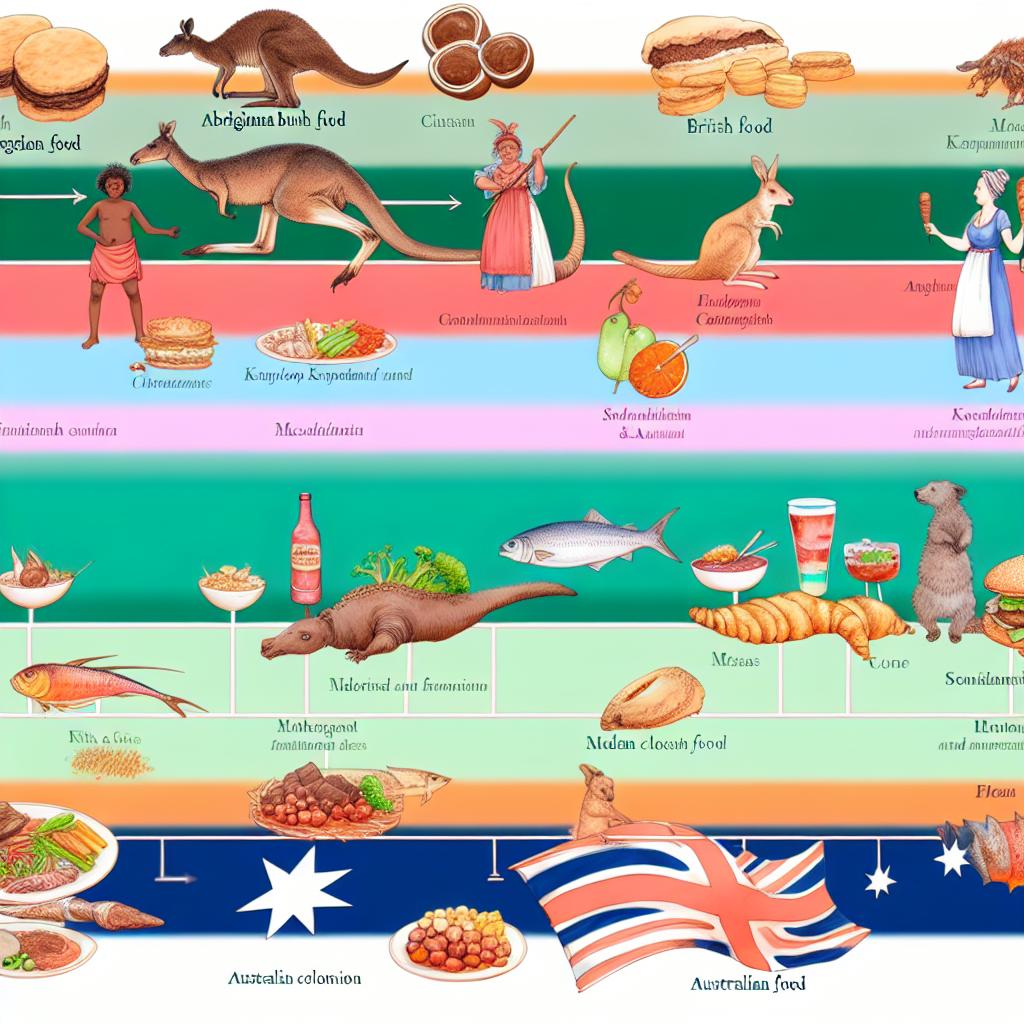
The history of Australian cuisine.
The Evolution of Australian Cuisine
The history of Australian cuisine is a complex tapestry that has evolved through various stages, drawing from indigenous traditions, colonial influences, and modern innovation. This culinary journey highlights Australia’s evolving cultural identity and showcases significant transitions and adaptations over the decades.
Indigenous Influences
Before the advent of European settlement, the indigenous peoples of Australia had already established an intimate connection with their land. Their diet was primarily comprised of bush foods, which they skillfully foraged and hunted. This included animals such as kangaroo and emu, along with a diverse selection of native plants like wattleseed, bush tomatoes, and quandong.
Traditional Preparation Methods
These ingredients were often prepared using methods that maximized their nutritional value. Common practices included roasting over open flames and fermenting, techniques that not only preserved the food but also enhanced its flavors. The indigenous Australians’ culinary skills and deep understanding of seasonal changes enabled them to thrive across diverse ecosystems for thousands of years.
Colonial Impact
The arrival of the First Fleet in 1788 marked a significant turning point in the culinary landscape of Australia. British settlers introduced their culinary traditions, which quickly began to transform the existing food culture. They brought over familiar crops and livestock, establishing wheat farming and introducing sheep and cattle to Australian soil. These new ingredients soon became staples in the local diet.
Blend of Flavors
The fusion of British culinary practices with local produce resulted in popular dishes such as meat pies, fish and chips, and hearty stews. These dishes not only became emblematic of the colonial period but also laid the groundwork for a culinary identity that mixes different traditions.
Post-War Migration and Multiculturalism
The aftermath of World War II saw Australia opening its doors to immigrants from around the world, which in turn enriched and diversified its culinary scene. People from Italy, Greece, Vietnam, China, and many other countries settled in Australia, bringing with them a rich array of flavors and cooking techniques.
Multicultural Culinary Landscape
With this wave of migration, Italian pasta, Greek souvlaki, and Chinese dim sum began to permeate the Australian food culture. This era marked a significant broadening of the Australian palate, with new culinary traditions influencing food habits nationwide.
Modern Australian Cuisine
Today’s Australian cuisine stands as a testament to its multicultural heritage. It is characterized by a blend of global influences, tempered with a renewed interest in indigenous ingredients. This fusion approach is increasingly evident as chefs explore the unique flavors offered by native foods while honoring traditional culinary techniques.
Innovative Culinary Practices
Modern chefs in Australia often experiment with ingredients like lemon myrtle, finger limes, and Kakadu plums, integrating them into a variety of contemporary dishes. These elements not only add depth and flavor but also pay homage to the country’s indigenous roots.
Wine and Dining Culture
Australia’s wine industry has matured significantly, with regions such as the Barossa Valley and Margaret River gaining international acclaim. The wines produced in these areas are now considered some of the finest in the world and offer perfect pairings for Australia’s diverse food offerings.
Sustainability and Local Sourcing
Another emerging trend is the focus on sustainability. Many restaurants are committed to sourcing ingredients locally to reduce their environmental footprints, aligning with a growing global awareness about the impact of food production on the planet. This trend also emphasizes the unique flavors and quality of Australian produce.
Cultural Exchange Through Food
While Australian cuisine has undergone extensive changes over the years, it maintains a central theme: a profound connection between its people and the land. Every dish—from a tender kangaroo steak to a classic Italian lasagna—recounts a tale of cultural interaction and evolution.
In conclusion, the story of Australian cuisine is one of dynamic intermingling between the ancient and the modern, continuously shaped by the diverse influences that have washed across its shores. This culinary evolution reflects a broader celebration of diversity and serves as a mirror to Australia’s vibrant and ever-changing society.




